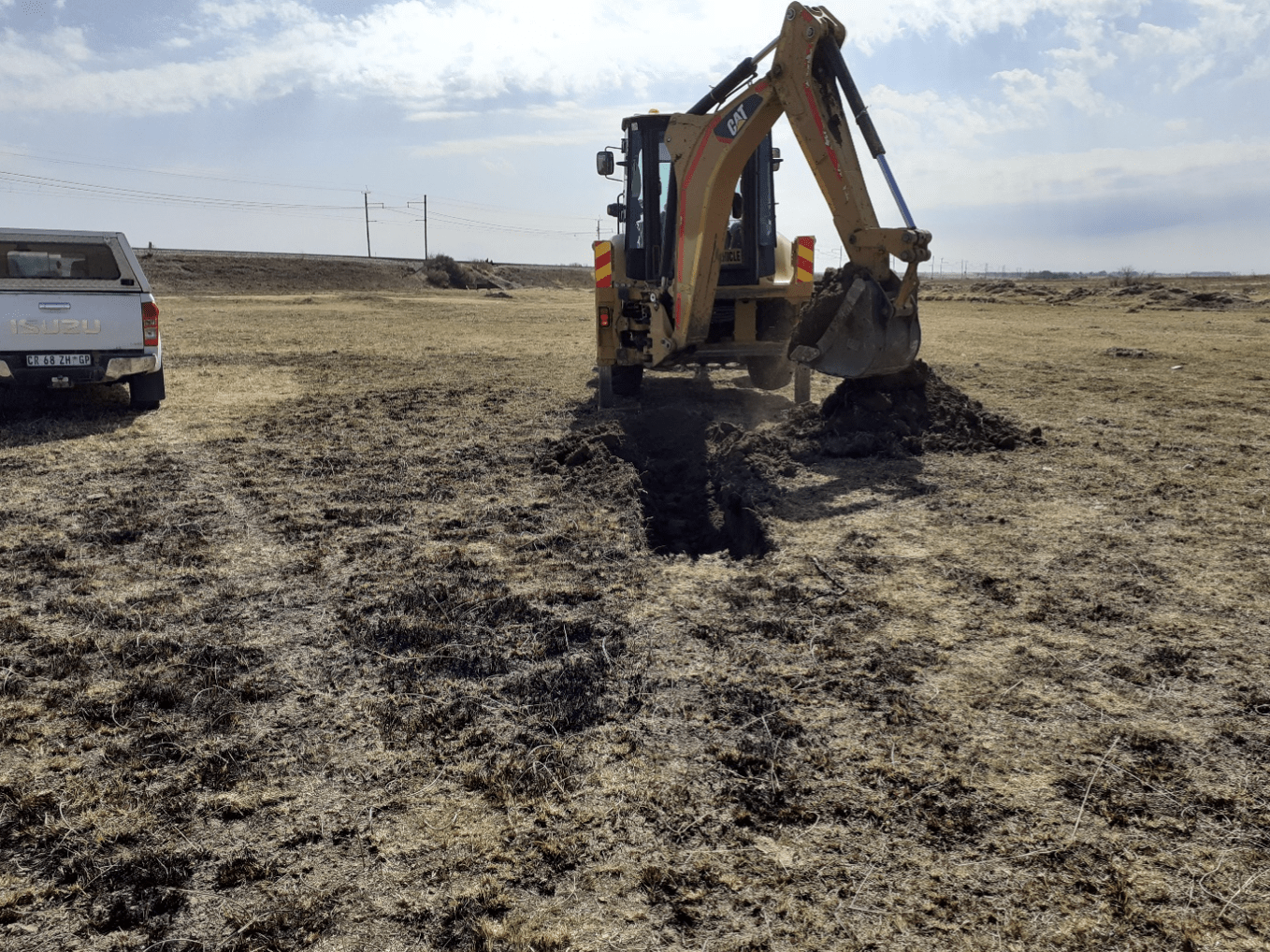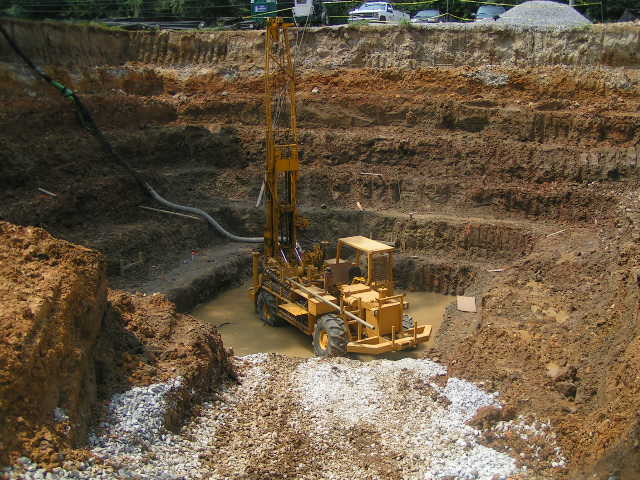Exploring the Fundamental Concepts and Applications of Geotechnical Engineering for Sustainable Framework Growth
The intersection of geotechnical design and sustainable infrastructure advancement presents an engaging possibility to boost both layout effectiveness and ecological duty. By recognizing key principles such as soil auto mechanics, website characterization, and foundation layout strategies, engineers can produce services that are not only effective however additionally decrease eco-friendly impacts.
Secret Principles of Geotechnical Design
Understanding the crucial concepts of geotechnical engineering is important for creating sustainable facilities (geotechnical companies in south africa). This self-control concentrates on the interaction between dirt, rock, and structures, playing an important function in the security and efficiency of design tasks. The primary principle is the analysis of subsurface problems through website investigations, which provide important details concerning soil properties, stratification, and groundwater levels
Another vital concept is the application of effective stress concept, which aids designers comprehend just how dirt habits modifications under differing loads. This understanding is critical for examining the bearing ability of structures and making certain that frameworks can endure both vibrant and static pressures.
Furthermore, the concepts of soil-structure communication and incline security are indispensable to geotechnical layout, as they educate choices on the positioning and design of preserving inclines, walls, and embankments.
Finally, geotechnical engineers have to think about sustainability by promoting making use of locally sourced products, lessening ecological effect, and maximizing styles for durability. By sticking to these concepts, geotechnical engineering adds dramatically to the production of lasting and durable framework that meets the needs of society while safeguarding the atmosphere.
Dirt Mechanics and Its Importance
Soil technicians offers as the foundation of geotechnical design, supplying the clinical principles required to assess the behavior of soil under different problems. Comprehending soil technicians is essential for forecasting just how soil will certainly react to tons, changes in wetness web content, and other environmental aspects. This understanding allows engineers to create structures that can withstand the stress applied by the soil and make sure stability and security.
The study of dirt technicians includes different elements, including dirt category, shear leaks in the structure, strength, and compressibility. These variables affect the style of structures, keeping walls, and other geotechnical structures, making it important to evaluate soil residential or commercial properties precisely. As an example, the shear strength of soil straight affects the stability of excavations and inclines, while compressibility impacts negotiation forecasts for buildings.
Moreover, soil technicians plays an essential duty in lasting facilities advancement. By understanding the soil's actions, designers can decrease environmental influences, enhance product usage, and enhance the longevity of structures. This combination of soil auto mechanics right into geotechnical design techniques not just makes sure safety and security however likewise contributes to the general sustainability of building tasks, promoting reliable source management and environmental stewardship.
Website Characterization Techniques
Efficient site characterization techniques are crucial for gathering important information concerning subsurface conditions prior to construction - all about geotechnical engineering. These methods give valuable understandings into dirt homes, rock formations, groundwater degrees, and possible geohazards, therefore educating task style and mitigating risks
One extensively used technique is piercing, which enables for straight tasting of soil and rock layers. This can be enhanced by in-situ testing, such as Basic Infiltration Tests (SPT) and Cone Penetration Examinations (CPT), to assess soil toughness and stratification. Geophysical techniques, consisting of seismic refraction and electrical resistivity surveys, enable non-invasive evaluation of subsurface products and structures, offering a more comprehensive perspective on geological problems.
Furthermore, lab testing plays a crucial role in analyzing click to read more soil samples acquired from exploration. Tests such as grain size evaluation, Atterberg limits, and triaxial shear examinations produce critical information on soil behavior under different loading conditions.
Integrating these site characterization strategies not only enhances the understanding of website problems but likewise sustains lasting framework growth by making certain that tasks are designed with suitable safety and security margins and performance specifications. Thus, an extensive website characterization is indispensable for notified decision-making in geotechnical engineering.
Structure Style Methods
Structure style approaches are crucial for guaranteeing the stability and long life of structures in different geotechnical contexts. These methods begin with a complete website investigation, which includes soil screening and evaluation to establish the physical properties of the subsoil. Comprehending soil habits under tons is crucial for choosing the proper foundation kind, whether shallow or deep.
Shallow structures, such as spread footings or mat foundations, are typically employed when ideal soil layers are available near the surface. These structures distribute tons over a bigger location, lowering the danger of extreme settlement. Alternatively, deep structures, such as piles or pierced shafts, are used in situations where surface dirts are poor to support structural tons. They transfer lots to deeper, much more secure dirt or rock layers.

Sustainable Practices in Geotechnical Engineering
The combination of lasting techniques in geotechnical engineering plays a crucial function in enhancing the environmental and economic practicality of facilities jobs. By prioritizing source efficiency and reducing environmental impacts, engineers can add to the growth of resistant facilities systems.
One secret lasting practice involves using alternate products, such as commercial byproducts and recycled accumulations, which can decrease the need for virgin sources and reduced carbon discharges. Additionally, soil stablizing techniques, including the application of bioengineering techniques, enhance soil residential or commercial properties while advertising environmental equilibrium.
Furthermore, the execution of sophisticated geotechnical modeling and tracking innovations permits much better forecast and management of ground problems, leading to enhanced design options and resource utilization. These modern technologies additionally promote the analysis of long-lasting efficiency, ensuring that frameworks remain useful and safe over their life expectancy.

Verdict
In final thought, the concepts and applications of geotechnical design play an essential function in lasting infrastructure growth. Stressing dirt technicians, site characterization, and ingenious foundation style approaches improves the resilience and performance of structures.
By comprehending essential principles such as soil mechanics, website characterization, and structure layout methods, engineers can produce options that are not just reliable but additionally minimize eco-friendly footprints.Dirt auto mechanics offers as the foundation of geotechnical design, providing the clinical concepts needed to assess the actions of dirt under various conditions. Recognizing soil technicians is vital for Click This Link predicting exactly how soil will certainly respond to loads, adjustments in moisture web content, and other ecological aspects.The research study of soil technicians encompasses various aspects, consisting of dirt classification, shear permeability, compressibility, and toughness. These factors affect the layout of structures, retaining walls, and various other geotechnical structures, making it vital to examine soil buildings properly.